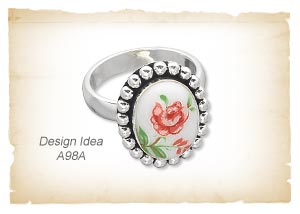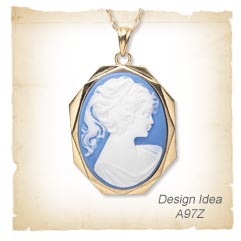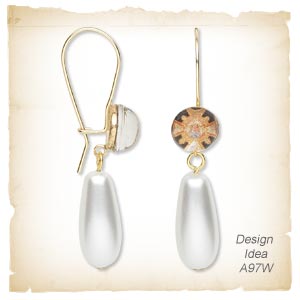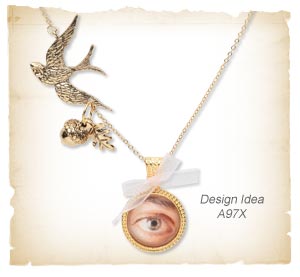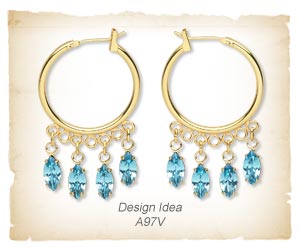by Jamie Smedley, Marketing Content Development, Exclusively for Fire Mountain Gems and Beads®
In China, the beginning of every year falls between late January and early February, and is marked by an animal sign of the Chinese zodiac that is repeated every twelve years. Each year is given a different animal sign as a way of counting the years. The years are scheduled according to the lunar cycles of the moon as compared to the solar-based calendars of the West. Since 1911, the Chinese have adopted the solar calendar and use it alongside the lunar calendar for holidays. Many Chinese calendars have both solar and lunar dates printed on them.
Zodiac Origins
The animals used in the zodiac, and how they came to represent it, are a wonderful Chinese legend with many variations. The most common version being the legend of the Jade Emperor and how he wanted to hold a race across a river to give twelve animals the right to rule for a year. All animals were given a chance to swim, and the first twelve to reach the opposite bank would win the positions in which they arrived.
Cat and Rat were the worst swimmers of all the animals, so they designed a plan to ask if they could cross the river on the back of Bull. Bull, being a kind and gentle creature, agreed to carry them. As the group reached the center of the rushing river, the ambitious Rat pushed Cat off Bull's back and into the water to ensure his victory. Rat's betrayal is why Cat and Rat have evermore been sworn enemies and why, to this day, cats despise swimming in water.
As Bull reached the riverbank, Rat darted atop Bull's head and sprang to the ground to reach the shore first and became the first zodiac animal. Bull was content to be given the second year. The third animal to successfully cross the river was Tiger, who was known to be the most powerful of all the animals. Exhausted, Tiger explained that the heavy currents of the river, coupled with an entangled log, had pushed Tiger further downstream, delaying the animal's arrival.
After Tiger was proclaimed the third animal of the zodiac, the Jade Emperor heard a thumping sound just as Rabbit bounded into view. As the fourth animal, he explained his attempts at trying to cross the river by jumping from stone to stone. The stones eventually came to an end, leaving Rabbit stranded in the middle of the waters and, fearing he could lose the race, thought quickly and hopped onto a floating log to reach the shore.
The fifth animal to reach the shore was Dragon. Dragon was as strong as Tiger, and even though he could fly, Dragon didn't come in first. When the Jade Emperor asked why, Dragon said that it was because he took time to stop and help the people and creatures of the earth who were suffering famine by causing rain. Then, seeing little Rabbit stranded on a rock, Dragon guided the log that was entangling Tiger away to instead help Rabbit float across the river.
Dragon had just finished this tale when a thunderous splashing was heard and Horse reared towards the shore but the cunning Snake, having wrapped around the ankle of Horse, suddenly dropped onto the bank just ahead of Horse. This sudden appearance spooked the poor Horse backwards, giving Snake the sixth position, followed by Horse in seventh.
Next to arrive were Ram, Monkey and Rooster who skidded to a stop on the shore riding a tangled reed raft. They told the Jade Emperor how they formed an alliance to help each other cross the river beginning with Rooster who had flown around until a suitable raft was spotted and then took Monkey and Ram to where it was. Then Ram and Monkey cleared the weeds and they all glided upon it across the water to the shore. Delighted with their mutual efforts, the Jade Emperor gave Ram the eighth zodiac position, Monkey the ninth and Rooster the tenth.
Dog, known to be the best swimmer, was next to reach the shore and explained that upon seeing his dirt-smudged coat paired with the tempting clean river waters, he decided to stop and bathe, but Dog tarried for too long and almost didn't finish the race. Finally, Pig emerged squealing and sputtering from the waters as the last and twelfth zodiac animal. Pig's reason for a late arrival was being "so ravenous with the exertion of finding a good crossing spot that a meal was needed," so he sniffed out a bountiful feast of grubs, berries and roots, followed by a short nap.
| | Rabbit
Charitable, welcoming and peaceful by nature, Rabbits thrive on routines and can become anxious if they have to step outside of the lines or make risky decisions. They thrive on details of the minutest kind and thoroughly enjoy creating a home of solace and beautiful tranquility. Cultivated and artistic, Rabbits are brilliant at remembering.
Rabbits are attracted to highly detailed jewelry designs that abound with cultured freshwater pearls, sapphires, faceted multicolored tourmaline and rainbow moonstone gemstone beads that flash and dance with lively colors.
Shop for Rabbit's gemstone beads: |
Find your year of birth in the article link below and see which zodiac animal your birth year represents. Also, discover the animal character traits and strengths that you share with those born in the same year, beginning between late January and early February.
by Jamie Smedley on the website of Fire Mountain Gems and Beads.















